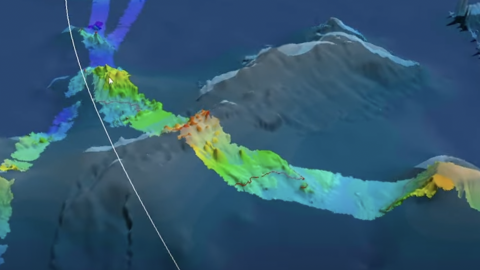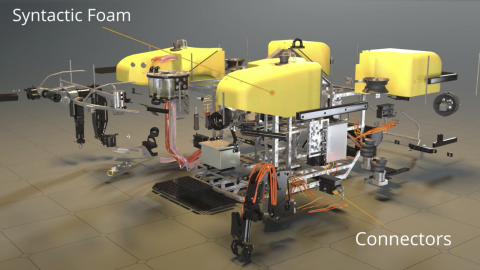Beyond the Wow: The Six Types of Ship Motion
Beyond the Wow is a series of education videos for students to learn about the STEM principles behind our deep-sea discoveries. Exploratory missions of the 68-meter (223-foot) E/V Nautilus rely heavily on the knowledge and expertise of our bridge crew and navigators. But to do so, it is important to understand the mechanics of the ocean and how they influence the way in which a ship moves.
At first glance, the ocean may appear flat, but it is anything but. A closer view offers a better look at the wind, currents, and wave action that influence how a ship moves in six degrees of motion: heave, sway, surge, roll, pitch, and yaw. These environmental conditions create a dynamic and ever-changing plan that Nautilus moves across — not just forward and reverse, but up and down, side to side, and even heaving into the air. Regardless, all six happen in combination, and understanding how helps scientists, engineers, and bridge operators make informed decisions about how and where to operate the ship, when it is safe to operate the ROVs, and how to calibrate our technology systems.
Here is a quick look at the six planes of ship motion:
- Pitch describes the up and down motion of a vessel. This is characterized by the rising and falling of the bow and stern in much the same way as a teeter-totter moves up and down.
- Roll is how we describe the tilting motion of the ship from side to side. Wind and waves push against the ship and cause it to rock back and forth.
- Yaw spins the ship on an invisible middle line similar to swiveling on a chair. This can be caused by waves moving in perpendicular to the motion of the ship and can change its heading, or direction.
- Heave defines the up and down motion of a ship as large swells heave Nautilus vertically on the crests and troughs of waves.
- Sway this sliding motion occurs when the hull of a ship is pushed by the wind or current.
- Surge occurs when Nautilus is being followed by larger swells, which can push the vessel forward and impact the front to back motion of the ship.
Now it’s your turn! Keep learning more in our free online educational resources.



